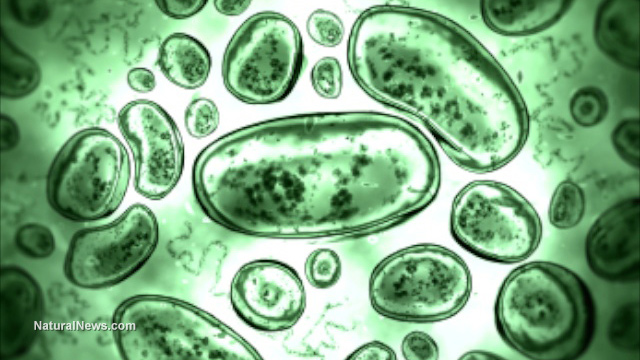Recently discovered 2.5-billion-year-old fossils may contain cyanobacteria that transformed Earth's atmosphere with oxygen

(Natural News) Most living creatures on Earth need oxygen to live – as such, the element is considered one of the building blocks of life. With this in mind, it might come as a surprise to find out that oxygen wasn’t present in the atmosphere of the early Earth. Now, a recent study has discovered how unusually large, primitive bacteria may have contributed to filling the atmosphere with life-giving oxygen.
Scientists from the University of Cincinnati have discovered fossils of a new, 2.5-million-year-old type of bacteria. The scientists postulate that these unusually large bacteria may be Cyanobacteria. If that is the case, then these bacteria or their ancestors may have helped transform the early Earth’s atmosphere by pumping it with oxygen.
The “Great Oxidation Event”
The fossils date from 100 million to 200 million years ago, before the Great Oxidation Event. This was when the planet’s atmosphere went from having no oxygen to having a small amount of it. (Related: Bacteria experiment findings suggest life could exist on Mars.)
“This is a very important time in Earth’s history, both in terms of the evolution of the Earth but also the evolution of life,” stated Andrew Czaja, an associate professor at the University of Cincinnati who co-authored the study. Fossils from the time of the Great Oxidation Event are actually quite rare. According to Czaja, he could only recall of four cases of microfossils from this time.
Czaja came across the fossils by accident while exploring in South Africa. There, he came upon a rock called a stromatolite. This rock is made up of layers of limestone and sediment left behind by microbacteria. Andrea Corpolongo, a doctoral student at the University of Cincinnati and co-author of the study, analyzed the rock under a microscope.
Under the microscope, they identified a fossil made of an organic compound called kerogen that the bacteria left behind. Interestingly, the bacteria were larger than modern cyanobacteria. Today, most cyanobacteria range from 5 to 10 microns in size, with some occasionally reaching 60 microns. Most of the ancient cyanobacteria fossils, however, were larger than these, with some reaching 100 microns in size.
Additionally, the fossils have shown a number of protrusions that the researchers haven’t been able to explain. One possibility is that they’re a type of budding, a type of asexual reproduction where the bacterium splits into two. However, modern cyanobacteria don’t bud. This means that either the fossils aren’t cyanobacteria, or what they’re seeing isn’t budding.
Are the fossils really bacteria?
For some, the size of the fossils indicates that they aren’t bacteria at all. “They’re larger than cells and cyanobacteria, which don’t look like that, so I wasn’t terribly convinced that that was a cell,” said Emily Kraus, a doctoral student at the Colorado School of Mines who wasn’t involved with the new research.
On the other hand, sedimentologist Nora Noffke from Old Dominion University in Virginia, who was also not involved the study, believes that the fossils are cyanobacteria. “I’m intrigued by those microfossils,” stated Noffke – “as if they would sprout I’ve never seen anything like that.”
The researchers remain convinced that what they have are fossils of bacteria. “Although their morphology does make them appear somewhat droplet-like, I cannot imagine a scenario during the formation of the stromatolite in which that could have occurred,” said Corpolongo. To her, the fact that the fossils were found in stromatolites is proof that they are true fossils.
For his part, Czaja is hoping to go back to South Africa to see if he can find any more fossils like the ones he originally found. “It would tell us more about the microbial communities that existed at this time.”
Visit Discoveries.news for more studies and stories on prehistoric discoveries.
Sources include:

